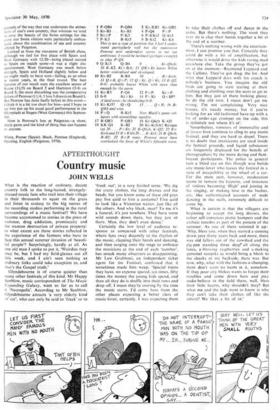Chess 493
PHILIDOR
A. Volkmann (1st. Prize, Lippische Landeszeitung, 1951). White to play and mate in two moves; Solution next week.
Solution to No. 492 (Gooderson--n2b4/3141r2/ 2pplppq/2pk2pb/2p4r/2B4Q/3N2n1/1131R2K1): B-B5, threat. B-K6. 1,... R-Kt5; 2 Kt-K4. 1 . • •
B-Kt5; 2 Kt-B3. 1 P-Kt5; 2 Q x Kt. 1 R x
Q; 2 Kt-B3. 1 ... Kt-B5; 2 B-K4. I R-K2: 2 Kt x P. 1 ... Kt-B2; 2 Kt-Kt6. 1 . . . PxB; 2 QxP. Fine key and outstanding interference play.
As an event, the seventeenth Clare Benedict Six Nations tournament held for the first time in England was a thorough success. The arrange- ments were excellent and it is an interesting example of the way that one underrates the attrac- lions of one's own country, that whereas we tend to envy the beauty of the Swiss settings for the event our Swiss visitors were particularly enthus- iastic about the combination of sea and country offered by Paignton.
Looked at from the viewpoint of British chess, although we tied for first place with Spain and West Germany with 12/20—being placed second to Spain on match score—it was a slight dis- appointment. West Germany was much below strength, Spain and Holland slightly below and we ought really to have won—failing, as so often in recent years, in the final round. The best features of our result were the excellent scores of Keene (3415) on Board 2 and Hartston (3/4) on Board 3; the most disturbing was the comparative failure of Penrose (1f/4; 1 loss 3 draws) on Board 1. But Penrose has done badly before in this event- ! think- it is a bit too short for him—and 1 hope to see him put up his usual good performance in the Olympiads at Siegen (West Germany) this Septem- ber.
Here is Penrose's loss at Paignton—a short, sharp game and the kind of thing that can happen to anyone.
White, Pomar (Spain). Black, Penrose (England). Opening, English (Paignton, 1970). 1 P-QB4 P-QB4 2 Kt-KB3 Kt-QB3 3 Kt-B3 , Kt-B3 4 P-Q4 P x P 5 KtxP P-K3 6 P-KKt3 Q-Kt3 7 P-K3 B-Kt5 8 B-Kt2 Kt-K4
This is not a type of position that I feel 1 under- stand particularly well but the manoeuvre Penrose now undertakes seems to me too ambitious: I would be inclined (perhaps wrongly) to play P-Q4.
9 Q-Kt3 Q-B4 9 . . Kt-Q6ch; 10 K-K2, Kt x Bch; 11 QR x Kt leaves White better centralised and developed.
10 Kt-132 B-R4 10 . BxKtch;
11 QxB, QxP; 12 QxKt, QxKi; 13 B-Q2, 0-0; probably leaves White with more than enough for the pawn.
11 Kt-R3 P-Q4 12 PxP Kt xP 13 0-0 KtxKt 14 PxKt QxBP? A fatal error; he should play 0-0.
15 Kt-Kt5! QxQ 15 . . QxR; 16 B- QR3 and wins.
16 P x Q B-Kt3 Now Black's game col- lapses with astonishing rapidity.
17 B-QR3 P-QR3 18 Kt-Q6ch K-Q2 19 KR-Q1 K-B2 20 Kt-Kt5ch! Resigns (a) 20 . . . Px Kt; 21 B-Q6ch, K-Q2: 22 Bx Ktch and 23 Rx R (b) 20 . . . K-Ktl ; 21 B-Q6ch, B-B2; 22 B x B mate. Penrose must have overlooked the force of White's fifteenth move.



































 Previous page
Previous page